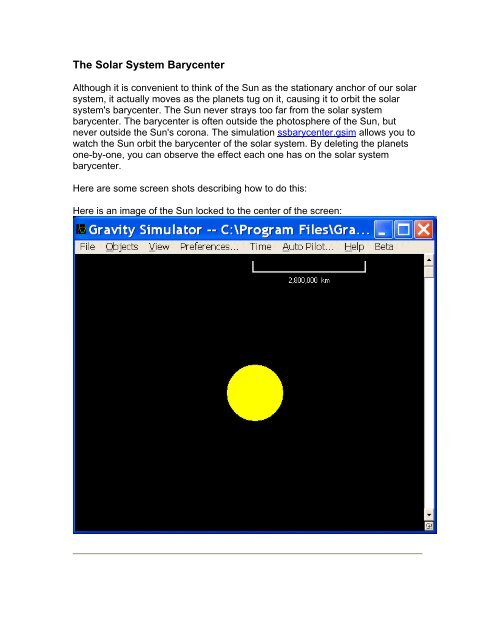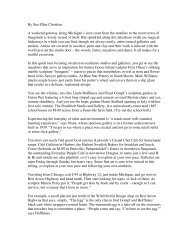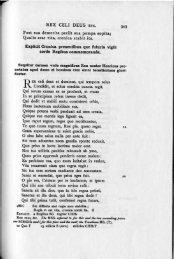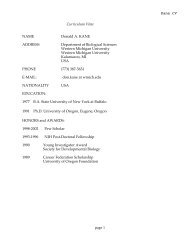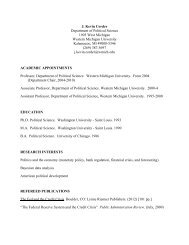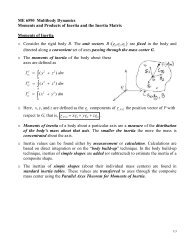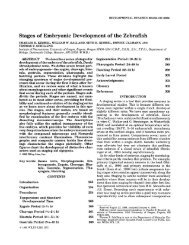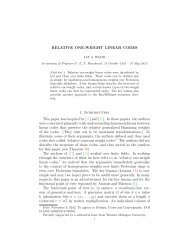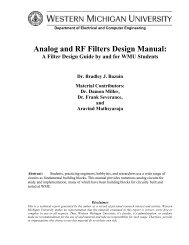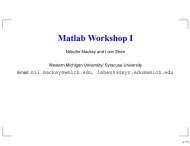The Solar System Barycenter
The Solar System Barycenter
The Solar System Barycenter
Create successful ePaper yourself
Turn your PDF publications into a flip-book with our unique Google optimized e-Paper software.
<strong>The</strong> <strong>Solar</strong> <strong>System</strong> <strong>Barycenter</strong><br />
Although it is convenient to think of the Sun as the stationary anchor of our solar<br />
system, it actually moves as the planets tug on it, causing it to orbit the solar<br />
system's barycenter. <strong>The</strong> Sun never strays too far from the solar system<br />
barycenter. <strong>The</strong> barycenter is often outside the photosphere of the Sun, but<br />
never outside the Sun's corona. <strong>The</strong> simulation ssbarycenter.gsim allows you to<br />
watch the Sun orbit the barycenter of the solar system. By deleting the planets<br />
one-by-one, you can observe the effect each one has on the solar system<br />
barycenter.<br />
Here are some screen shots describing how to do this:<br />
Here is an image of the Sun locked to the center of the screen:
Editing the Sun and setting its size to 0 while retaining its mass allows me to<br />
zoom in on the solar system barycenter and observe the Sun's path around it:
Editing Jupiter, and setting its mass to 0 demonstrates that Jupiter is responsible<br />
for the majority of wobble:
Saturn is the next strongest perturber. Setting its mass to 0 shows:
<strong>The</strong> next strongest perturber is Neptune. Setting its mass to 0 causes the Sun's<br />
motion around the solar system barycenter to trace a circle around its barycenter.<br />
Uranus is responsible for this circle. <strong>The</strong> Sun's period around the barycenter and<br />
Uranus' period around the barycenter match:
Zooming in exposes the effects of the smaller planets on the Uranus-induced<br />
circle:
Setting Uranus' mass to 0 eliminates the Uranus-induced wobble. <strong>The</strong> Sun's<br />
center now appears to rest on the solar system barycenter:
But zooming in further exposes the influences of the remaining planets on the<br />
solar system barycenter: <strong>The</strong> Earth/Moon system is responsible for the majority<br />
of the wobble:
Setting the Earth/Moon mass to 0 leaves Venus as the most significant perturber.<br />
It has the following influence:
Setting Venus' mass to 0 leaves Mercury, Mars, and Pluto as the sole perturbers.<br />
<strong>The</strong>y cause the center of the Sun to trace the following path around the solar<br />
system barycenter:
Zooming in for a clearer view, the effects of Mercury and Mars are seen. Pluto's<br />
effect is pulling this pattern off-center:
Setting Mars, which is now the most significant perturber, to 0 shows Mercury's<br />
influence causing the center of the Sun to trace circles around the solar system<br />
barycenter:
Letting this simulation run for half of a Pluto orbit exposes Pluto's influence on the<br />
solar system barycenter:


